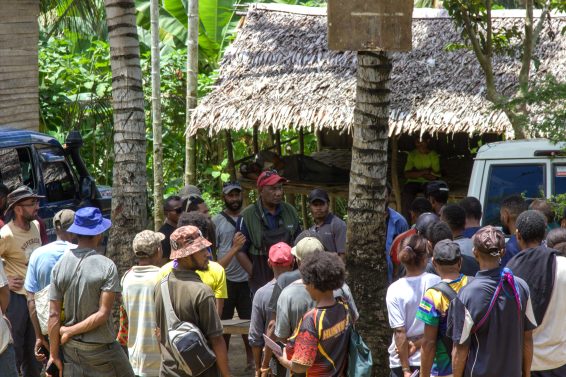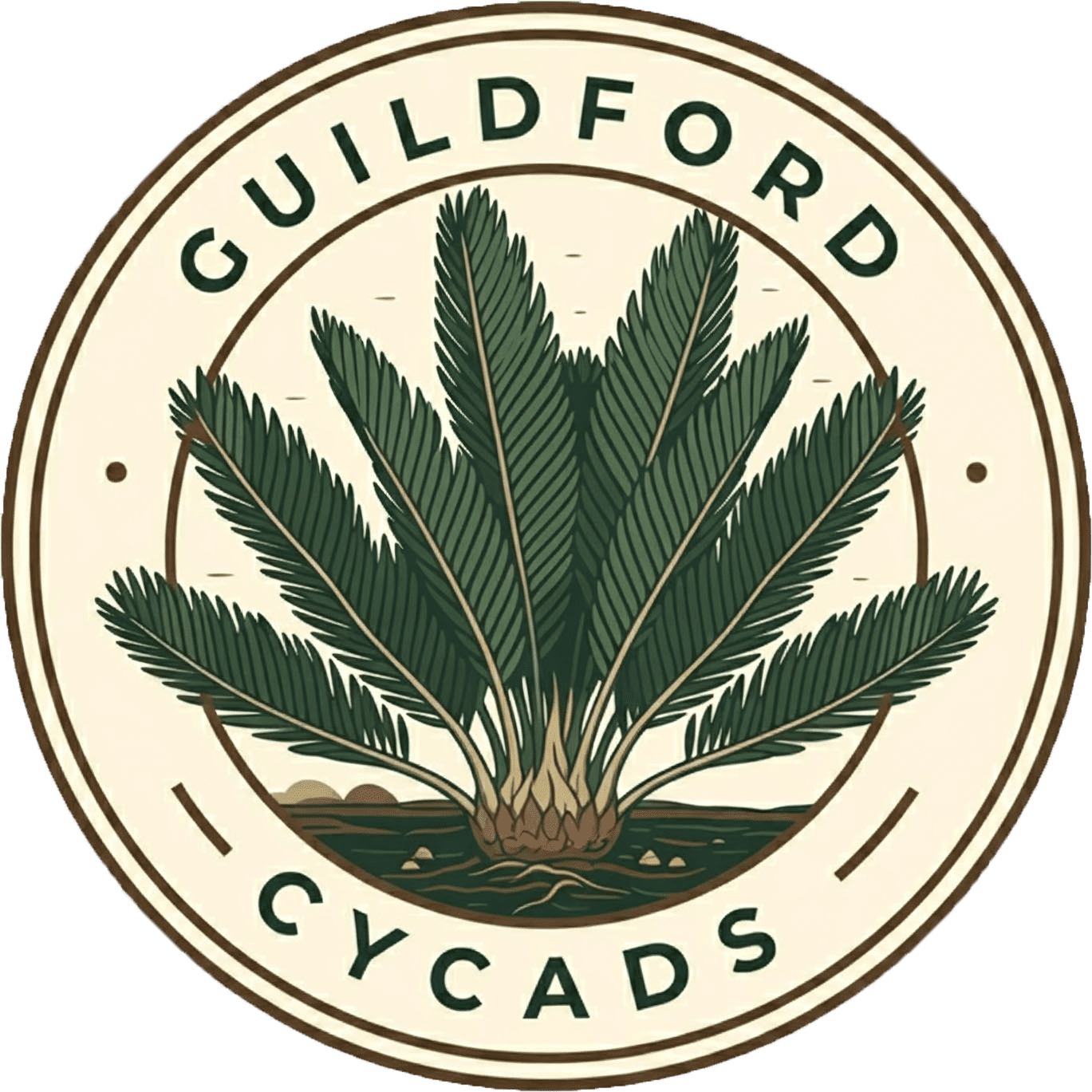In Joive Village, on the eastern edge of Papua New Guinea (PNG)’s Managalas Plateau, a group of local youth gather in a red-dirt clearing, shaded by a tall stand of betel nut palms [Areca catechu]. They’re preparing to survey people in the surrounding villages and hamlets about their livelihoods, land-use preferences and attitudes towards conservation. Their answers will inform the Managalas Conservation Area (MCA)’s developing management plan and future project activities. The task for today seems simple, but it’s not; the experience gives a taste of the wider challenges of doing research in large, diverse and isolated places like the Plateau.
Will Unsworth, a forestry scientist at the Center for International Forestry Research and World Agroforestry (CIFOR-ICRAF) who leads the EU-funded MCA project, carefully passes out project smartphones and reminds the group how to record people’s responses in the data collection app KoboCollect. A colleague hands out pocket-sized packs of hard, square beef-flavoured crackers—a prized treat in a place that’s a long, juddery and unreliable drive from the nearest supermarket—to sustain the team on their information-gathering journeys.

As part of the project, the team hands out the cellphones with the data collection app KoboCollect. Photo by Danumurthi Mahendra / CIFOR-ICRAF
Then, the rangers set off, splitting up into small groups and following walking trails through the forest to the particular villages and hamlets to which they’ve been assigned that day. There’s only one road through the 214,696-hectare MCA and for many communities, it’s a several-hour walk away. The hamlet I visit is a cluster of bamboo huts atop a steep hillside, surrounded by overgrown coffee plantations and dense forest. The surveyors have sent a runner earlier to organise the visit, but when we crest the hill and step into the clearing, the village is quiet. An elderly man emerges and tells us that most people have gone out to work in their gardens and won’t return until later. Gardening space in PNG is not usually a plot beside one’s house—rather, it’s a cleared area in the forest that’s designated under family and clan lines and that might be hours’ walk away from one’s home.
The would-be researchers are unsurprised. For subsistence farming communities like these, the abstract benefits of participating in another survey don’t compete well with the tangible allure of a fresh bundle of yam or plantain. Some of the rangers pull out bags of betel nut to chew and settle in to wait for the villagers’ return, while others split off to search out other hamlets where people might be at home.
“People are already tired”: research fatigue and the quest for results
The above experience exemplifies some of the challenges of carrying out research with people on the Plateau. Aside from the apparent barriers to access and communication—there is little mobile reception or roading infrastructure, and most people don’t have cellphones or reliable vehicle access anyway—research fatigue is very real.
Managalas’ communities have been engaging with outsiders on conservation and land-use issues for decades—most notably with Port Moresby-based NGO Partners with Melanesians (PwM), which operated in the area from the 1990s until 2022 and was instrumental in making the MCA declared in 2017, a reality.
Unfortunately, while research to date has been piecemeal enough that there’s no adequate baseline picture of land-use and livelihood needs, it’s also been sustained enough—without sufficient links to outcomes—that people have become sceptical of its purpose and value.
From the community’s perspective, a lot of extractive research and information-sharing has taken place without much coming back to them in return. Going forward, a far more participatory research ethic, where community members co-create research processes and have access to data and analysis as it develops, is going to be imperative.
The day after the survey expedition, my colleagues and I (the author) take the road across the Plateau’s expanse; kids along the way greet me as either “wait meri” (white woman) or “Jesus Christ”. Eventually, at a large settlement dotted with tall coconut palms, we park up. Some kids show us to a bamboo platform roofed in palm thatch and introduce us to village leader Malchus Kajia, who has been a proponent of the conservation area from the outset.

The CIFOR-ICRAF project team are briefing the surveyors on their task in in Joive Village. Photo by Danumurthi Mahendra / CIFOR-ICRAF
As current chair of local NGO Managalas Development Foundation (MDF), Kajia knows all about research fatigue. “People are suspicious about information that has been collected from us, from them,” he tells me. “They tell us that information is money, and with information [the researchers] can receive funds from elsewhere, without those funds reaching us. So that’s one of the biggest concerns.”
While some of the circumstances for this suspicion are localized, mistrust and aversion to data-gathering is not limited to the Plateau. Across Papua New Guinea, many people speak out against anyone collecting personal data. Coupled with administrative and geographic challenges, that’s led to a country-wide dearth of data. There is no national system for birth registration; progress in rolling out the National Identity Card system has been extremely slow; and the country hasn’t held a successful census in 24 years, meaning there’s no clarity on the number of people that live there.
In Managalas, data suspicion was tragically exacerbated after numerous key PwM files were lost in an IT outage, meaning incoming partners had to begin without a comprehensive baseline. “The challenges that we are now facing is that because of the loss of information, we are repeating ourselves, and we know that people are already tired,” said Malchus. “But we tell them that the Conservation Area is declared now, we have a donor who is here to help us, we have money there. So we are trying to help people to understand; we promised them that maybe by the end of this year, next year, we should get the activity rolling.”
With the household survey now complete, CIFOR-ICRAF’s scientists are analysing the data to produce a summary for feedback from the people of Managalas. Then, a new round of workshops will be held to report back the findings of the survey, as well as to provide draft copies of the management plan.
The project team is also finding new ways to share collected data more transparently and effectively. In one such initiative, they’re developing a local wireless network to enable free voice and video communication across the Plateau. This will also connect community members to a local server where information about Managalas can be securely stored, and easily shared with current and future development partners.
The post When ‘the field’ is a forest: Nuances of data-gathering on Managalas Plateau appeared first on CIFOR-ICRAF Forests News.
See the rest of the story at forestsnews.org
Related:
Making Managalas: Consensus for conservation on PNG’s Managalas Plateau
Les engagements climatiques misent-ils trop sur la plantation d’arbres ?
Leading women in sustainable wildlife management: Meet Lorrie Thomas
